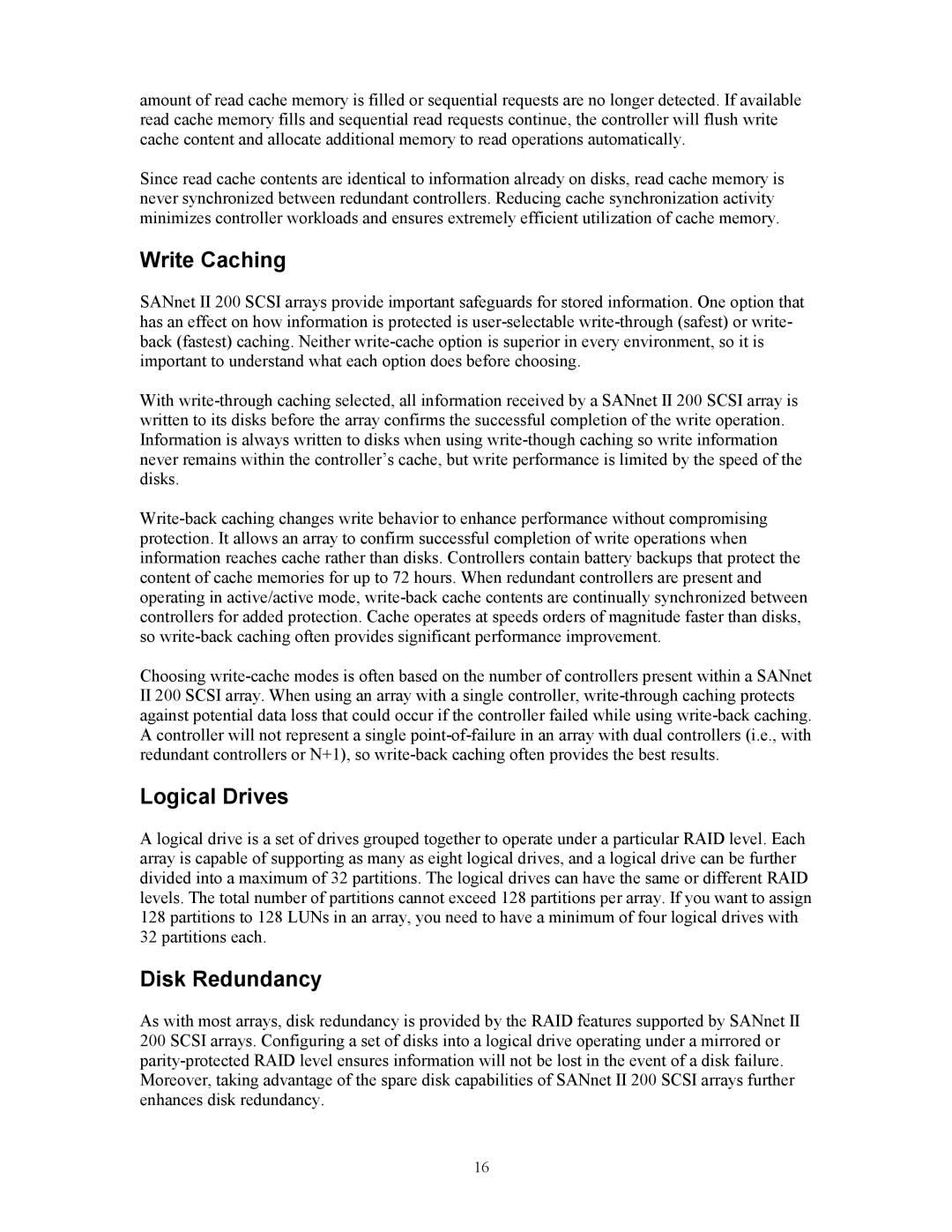amount of read cache memory is filled or sequential requests are no longer detected. If available read cache memory fills and sequential read requests continue, the controller will flush write cache content and allocate additional memory to read operations automatically.
Since read cache contents are identical to information already on disks, read cache memory is never synchronized between redundant controllers. Reducing cache synchronization activity minimizes controller workloads and ensures extremely efficient utilization of cache memory.
Write Caching
SANnet II 200 SCSI arrays provide important safeguards for stored information. One option that has an effect on how information is protected is user-selectable write-through (safest) or write- back (fastest) caching. Neither write-cache option is superior in every environment, so it is important to understand what each option does before choosing.
With write-through caching selected, all information received by a SANnet II 200 SCSI array is written to its disks before the array confirms the successful completion of the write operation. Information is always written to disks when using write-though caching so write information never remains within the controller’s cache, but write performance is limited by the speed of the disks.
Write-back caching changes write behavior to enhance performance without compromising protection. It allows an array to confirm successful completion of write operations when information reaches cache rather than disks. Controllers contain battery backups that protect the content of cache memories for up to 72 hours. When redundant controllers are present and operating in active/active mode, write-back cache contents are continually synchronized between controllers for added protection. Cache operates at speeds orders of magnitude faster than disks, so write-back caching often provides significant performance improvement.
Choosing write-cache modes is often based on the number of controllers present within a SANnet
II200 SCSI array. When using an array with a single controller, write-through caching protects against potential data loss that could occur if the controller failed while using write-back caching. A controller will not represent a single point-of-failure in an array with dual controllers (i.e., with redundant controllers or N+1), so write-back caching often provides the best results.
Logical Drives
A logical drive is a set of drives grouped together to operate under a particular RAID level. Each array is capable of supporting as many as eight logical drives, and a logical drive can be further divided into a maximum of 32 partitions. The logical drives can have the same or different RAID levels. The total number of partitions cannot exceed 128 partitions per array. If you want to assign 128 partitions to 128 LUNs in an array, you need to have a minimum of four logical drives with 32 partitions each.
Disk Redundancy
As with most arrays, disk redundancy is provided by the RAID features supported by SANnet II 200 SCSI arrays. Configuring a set of disks into a logical drive operating under a mirrored or parity-protected RAID level ensures information will not be lost in the event of a disk failure. Moreover, taking advantage of the spare disk capabilities of SANnet II 200 SCSI arrays further enhances disk redundancy.
